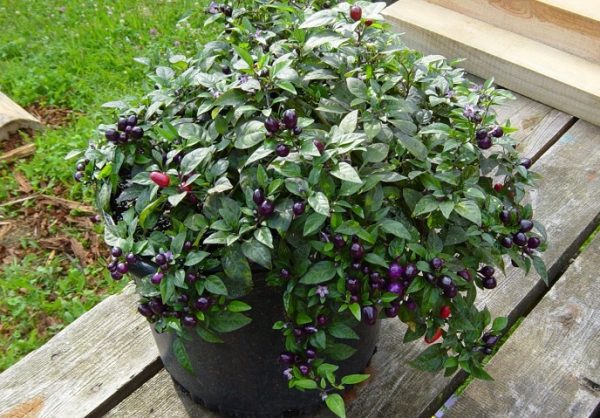 Sweet and bitter peppers are loved in almost every family. They are used fresh, for the preparation of salads, canned, stuffed, frozen. In addition to the usual varieties, more often than not in botanical gardens and not at exhibitions of breeders, but on the most ordinary garden plots you can find pepper of amazing color and shape.
Sweet and bitter peppers are loved in almost every family. They are used fresh, for the preparation of salads, canned, stuffed, frozen. In addition to the usual varieties, more often than not in botanical gardens and not at exhibitions of breeders, but on the most ordinary garden plots you can find pepper of amazing color and shape.
In addition to aesthetic pleasure, unusual varieties of peppers differ in their original taste and aroma, so be sure to try it. And which species are most popular and what should be paid attention to when breeding them, we will consider further.
Content
Description and characteristics of rare varieties of pepper
Most unusual varieties of pepper are very demanding on natural conditions. For planting, you need to choose the most lighted area, but at the same time try to ensure that direct sunlight does not fall on the bushes, otherwise a burn may occur. It is also necessary to protect plantings from drafts, if there are no tall bushes nearby that could fulfill this task, you need to take care of the shelter in advance, use a special shading grid to protect from the sun.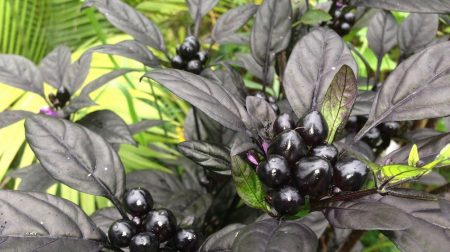
Soil composition is very important. It should be not only fertile, but also loose. Prepare it in the fall. Carefully remove the remains of the crop, dig it with manure or humus, and then fill it with a thick layer of fallen leaves. During the winter, she will cross and become an excellent top dressing for the soil. In the spring, it remains only to loosen the bed and plant seedlings.
It is grown according to the standard scheme. Seeds are planted in separate containers in late February and early March. During the cultivation, 2 top dressings (one organic, one mineral) are carried out. Before transplanting into the soil or a greenhouse, they are quenched. These are general rules, but after choosing some specific unusual variety, it is better to study the information about it in more detail. Agricultural technology can vary significantly.
Unusual Hot Peppers
Hot peppers can have a different sharpness. Some types are simply impossible to eat fresh, and some have a rather mild flavor.
Black olive
The name of this variety of pepper received for its amazing appearance. Indeed, in appearance it is very similar to olives. The peppercorns are small, oval black, and when ripe, they turn red. Bushes are lush, low (55-65 cm). The leaves are dark purple, elegant decorative form, which further emphasize the originality of the fruit.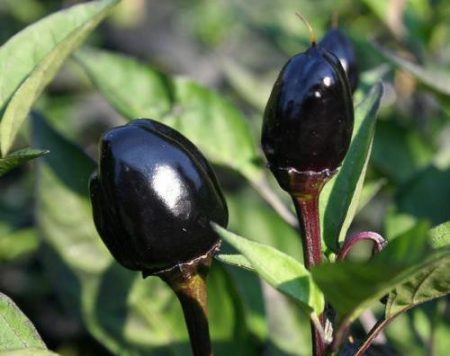
Very sharp and burning. It is mainly used for making hot marinades, sauces and ketchups. Has no special requirements for cultivation and environmental conditions.
Filius blue
A very attractive plant. The bush is low, more than 45-50 cm does not grow. But it is quite lush and sprawling, and continues to develop even during fruiting. To fully enjoy the beauty, you need to plant seedlings at a distance of 80-90 cm.
The leaves on the bush are purple with prominent veins. The fruits themselves first have a purple color, then gradually change it to yellow, then dark orange and become bright red at the moment of biological ripeness. Given that they do not mature at the same time, but gradually, the decorative effect is amazing.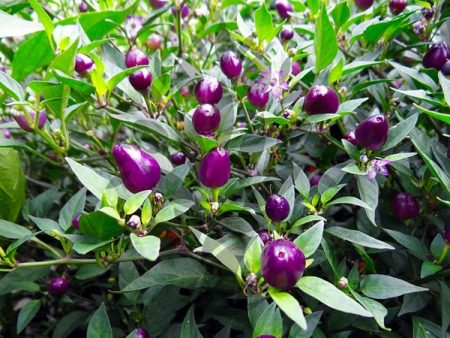
If you pick a purple peppercorn, then because of the strong burning sensation, it will be impossible to eat it, but as you approach the red color, the sharpness goes away, softens.
Chilly Willy
This pepper has a very original shape. The culture is quite expensive and rare. It should be noted that many grow peppers of this variety exclusively for decorative purposes and do not even realize that the fruits can be eaten.
It can grow both in the greenhouse and in the open ground, and at home on the windowsill all year round. But in the latter case, you should be ready to harvest once a year and a half.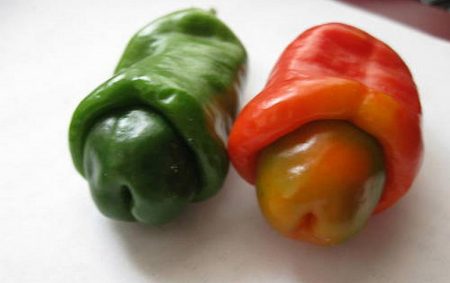
The color of the fruit can be green, and yellow, and red. The skin is dense, glossy. The severity is moderate. They are used both fresh and dried, as well as frozen and canned.
Yellow mushroom
This pepper is quite common among fans of unusual plants and breeders. It differs in rich yellow color and the original shape of the fruit, resembling a mushroom in shape. The size can be from 3 to 6 cm. Acuity is moderate.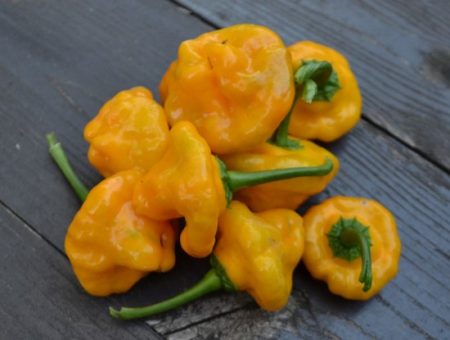
The bush is low, decorative in shape, but very lush. The variety is characterized by high productivity, but it is very demanding on heat and light.
Unusual bell peppers
Be sure to choose the most suitable sweet pepper variety listed below. The original shape of the fruit, pleasant taste and unusual aroma will be your best reward for this.
Ingrid
The mid-season hybrid of rich chocolate color instantly attracts attention. Its shape is cuboid, the weight of one fruit is about 220 g. The walls are thick, up to a centimeter. The pulp is juicy, sweet, with a long finish.
The bush reaches a height of a meter or more, very powerful, spreading. Requires mandatory garters.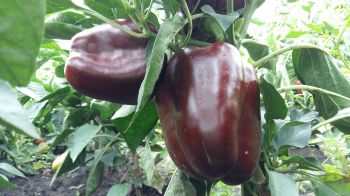
To get a good crop, you need a stable air temperature, moderate humidity, regular loosening of the soil and the frequent use of complex fertilizing.
Blot
Anyone who remembers what a blot is, will immediately understand why this variety of pepper received such a name. Mid-season hybrid allows you to harvest 130-135 days after the appearance of the first seedlings.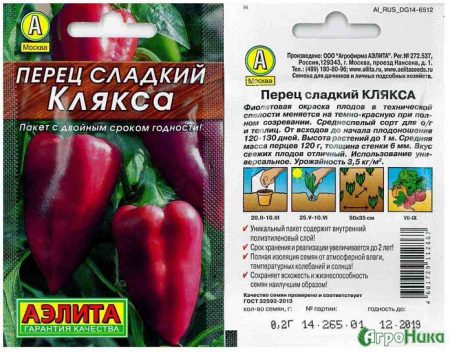
The bush is of medium height. Fruits are juicy purple, very attractive in appearance, weight about 130-140g. With a square meter on average, 3.5-4 kg comes out.
The variety needs stable air temperature, normal lighting and fertile soil.
Gingerbread man
This sweet pepper variety is half-stemmed. The bush above 45 cm does not grow, has a lot of leaves. The fruits are almost completely round, very attractive, in a state of biological ripeness of red color. Weight up to 170 gr. From an meter of kV, an average of 5-6 kg of pepper can be collected, but only on the condition of regular feeding, proper watering and loosening of the soil.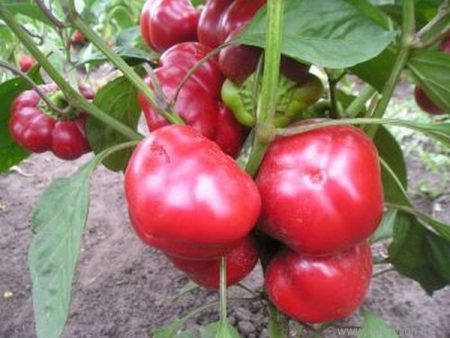
It has a rich aroma, increased resistance to diseases and pests.
White Cloud
At first glance, this variety is no different from its relatives, except perhaps in a more shortened and rounded shape. But you just have to wait for the state of technical ripeness. During this period, it becomes almost snow-white, and gradually changes color to orange, and then red. The weight of one pepper is about 150 g.
Bushes of medium height, but because of the large number of fruits require garter.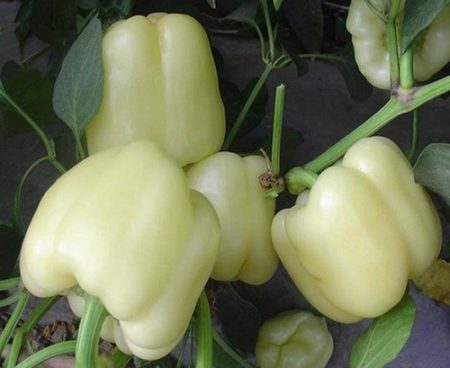
Pepper is very sweet, juicy, the wall is thick, which significantly extends the shelf life and increases resistance to transportation. It is not picky about growing conditions, but it is better to grow in a hotbed.
Snowwhite
This is an early ripe hybrid. The variety is characterized by increased productivity, but can be grown exclusively in greenhouses. In open ground, crops can be obtained only in the southern regions with a stably warm climate, and even then not always.
It got its name for its white color at the time of technical ripeness, and only with time did the breeders learn that by biological ripeness the pepper turns bright orange.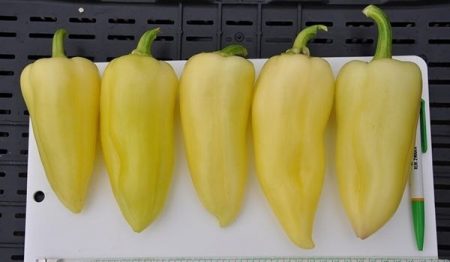
The taste is full, sweet. It is resistant to diseases and pests. Thanks to the lush foliage, it helps maintain a normal level of humidity for the fruit.
Tamina
An early hybrid designed for indoor and outdoor cultivation. The first fruits can be tasted already 60-65 days after the appearance of the first seedlings. The bush is low, but quite powerful. The fruits are juicy, sweet, sometimes with a small speck. The walls are thick up to 8 mm.
They are distinguished by their attractive appearance, they are well stored and can easily transport transportation over long distances. They are used fresh, frozen and canned.
Reviews
Nadezhda Nikolaevna, 57 years old
Bell pepper is my weakness. I grow quite a lot of different varieties on my site. I try to choose such that they replace each other in terms of time and look attractive. A couple of years ago I saw a decorative pepper at a party. The fruits were multi-colored, a bush lush. In general, this decoration is not only the windowsill, but the whole room. She asked for several fruits, she herself prepared seeds from them and tried to grow. But nothing happened. Then I found it on sale and this time everything turned out. I didn’t try to grow it on the garden bed, but on the windowsill in the winter it’s just a miracle.
Natalia, 32 years old
I like hot pepper very much. From the summer I harvest, freeze and preserve, but still the taste is lost. This year I bought a room option. Variety "Olive". Less in the small size of the fruit, but the bushes are so chic that I just can’t stop looking at it. And the fact that all year round my favorite hot pepper is growing on my windowsill is a definite plus. They say that he can be planted in the garden. It will be necessary to try.
Move away from tradition, take a chance and plant on the site sweet and bitter peppers of unusual varieties. Believe me, after the first attempt, they will become permanent residents of your garden.




 Calorie pepper stuffed with meat and rice - BZHU per 100 grams
Calorie pepper stuffed with meat and rice - BZHU per 100 grams Gorky pepper - the best varieties for open ground
Gorky pepper - the best varieties for open ground Hot pepper seeds - the best varieties for open ground and reviews
Hot pepper seeds - the best varieties for open ground and reviews Capsicum tincture for hair - how to use and reviews
Capsicum tincture for hair - how to use and reviews